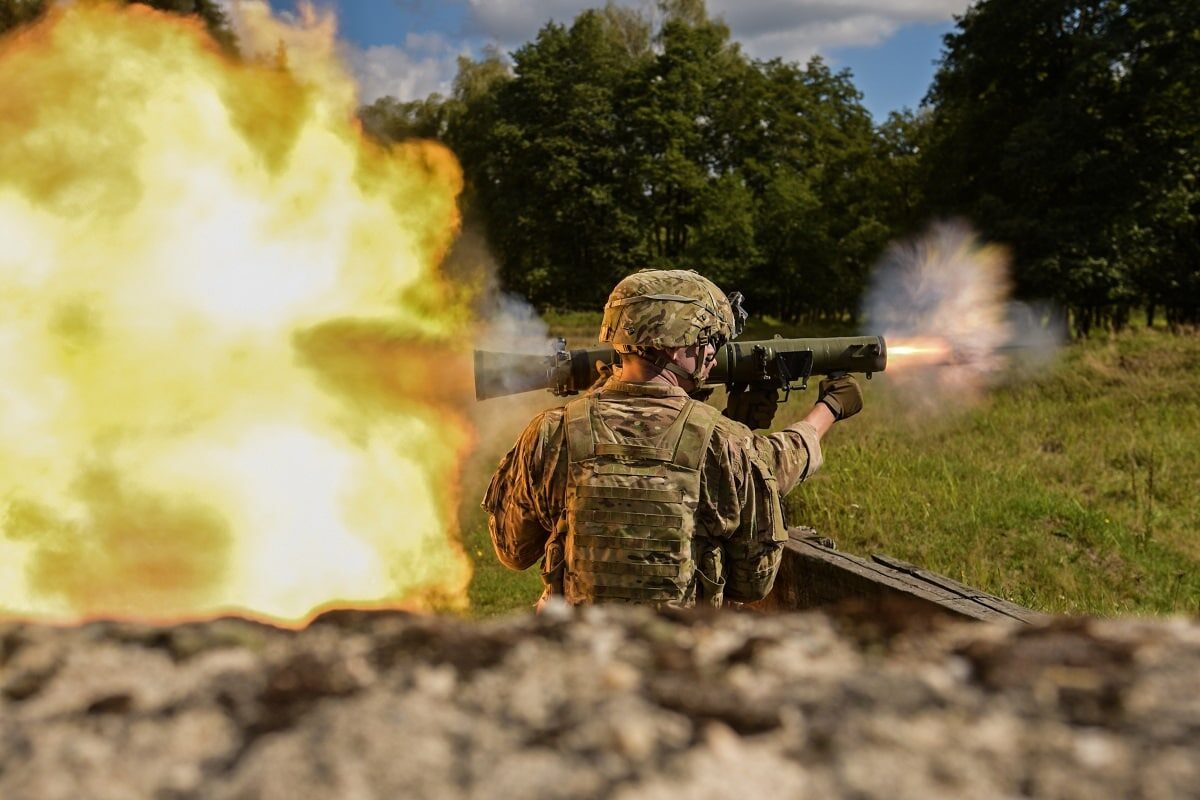On Monday, Swedish defense contractor Saab announced it had finalized a deal with the U.S. Department of Defense to provide more AT4 anti-tank weapons systems ammunition for Carl Gustaf recoilless rifles. The deal, worth $104.9 million, will provide equipment to the U.S. Army, U.S. Marine Corps, and U.S. Special Operations Command. The order comes as some analysts have begun raising concerns that the U.S. is depleting its weapons stocks to supply Ukraine in their conflict with Russia.
Carl Gustaf:
The Carl Gustaf is an 84mm recoilless rifle developed by Sweden in the 1940s. It was inspired by the success of shoulder fired anti-tank weapons of the Second World War such as the American Bazooka and German Panzerschreck. Since its inception, it has seen widespread adoption by multiple militaries and high levels of success in several conflicts from Congo Crisis in the 1960’s to the latter half of the War in Afghanistan.
One of the major factors of its success lies in its design, which makes it relatively portable while still packing a powerful punch. Newton’s third law of motion – every action has an equal and opposite reaction – makes firing large projectiles difficult. The recoil in a handgun or rifle is relatively easy to control because the force of a small caliber bullet firing is negligible. In the case of larger rounds, say something to punch through lightly armored vehicles or enemy fortifications, the force is much greater, hence modern cannons having large stabilizers and recoil systems. The Carl Gustaf uses propellant gas to nullify the force of the projectile, meaning a single operator can fire a high explosive warhead to distances over 1,500 feet.
Since its inception, the Carl Gustaf has had a wide variety of use cases beyond anti-tank or anti-vehicle uses. Depending on the ammunition loaded, it can be used in close range anti-personnel actions, firing over 1,000 flechettes like a large shotgun. Several of the high explosive charges can be “lobbed” to at long ranges and detonate as an airburst making them highly effective against entrenched enemies. Star shells provide stark illumination at night and High Explosive Anti-Tank (HEAT) rounds work as advertised to knock out enemy armor. Reportedly, a Carl Gustaf was used to destroy a Russian T-90 in Ukraine. For purpose-built anti-tank systems however, few rival another Saab system, the AT4.
Introducing the AT4:
This anti-tank system makes up the other part of the deal between the DoD and Saab. It also uses recoilless technology however because the barrel is not rifled, it is technically a smooth-bore recoilless gun. At 84mm it is the same caliber as the Carl Gustaf,the primary difference is that it is a single use disposable system.
Cannons and guns that are designed to fire multiple rounds must take into account the fact that the chamber and barrel will be subjected to repeated spikes in temperature and pressure. As such, they must be constructed from reinforced materials and rigorously tested before use. By contrast, the AT4 has a composite fiberglass shell. While this means it can only be used once, it makes the construction incredibly lightweight allowing it to be carried and employed by individual light infantry.
Like the Carl Gustaf, the AT4 has multiple types of ammunition. Its primary role is to allow lightly armed troops to disable or destroy armored vehicles and to do so it uses HEAT rounds capable of penetrating armor. It can also fire standard High Explosive shells for use against infantry or one of several specialized ammunition types to destroy bunkers or buildings. As detailed by Army Technology, “The AT4 warhead can penetrate more than 17.5in of armour plate. The weapon covers a minimum arming distance of 10m, which makes it more accurate in targeting short distance targets. Wooden structures, even if they are heavy timbered, cannot offer any resistance to AT4. The weapon can create a hole in armoured vehicles. The AT4 warhead is still undergoing many typical tests in urban targets.”
AT4 Effectiveness:
While the AT4 is an older model anti-tank weapon and many believe it is ineffective against modern armor – particularly explosive reactive armor (ERA) which explodes outward from the tank to prematurely detonate anti-tank rounds before they reach the armor of the tank itself – the Ukrainian Armed Forces have proven its efficacy.
A video from the beginning of this year shows a disabled T-90M, reportedly hit by an AT4. This tank is one of Russia’s most advanced so its destruction by a forty year old weapons system is a testament to the longevity of Saab’s design. Moscow’s fleet of modern tanks has not held up well to Ukraine’s weaponry. North Atlantic Treaty Organization (NATO) allies, including Sweden, have delivered scores of advanced military equipment and other systems to aid Kyiv’s defensive efforts. Considering the solid performance of the AT4 and Carl Gustaf throughout the invasion, Moscow’s surviving armored vehicle stockpile won’t survive long.
Maya Carlin, a Senior Editor for 19FortyFive, is an analyst with the Center for Security Policy and a former Anna Sobol Levy Fellow at IDC Herzliya in Israel. She has by-lines in many publications, including The National Interest, Jerusalem Post, and Times of Israel. You can follow her on Twitter: @MayaCarlin.
From the Vault
‘Vacuum Bombs Destroyed’: Ukraine Footage Shows Putin’s Thermobaric Rockets Destroyed
BOOM! Ukraine Video Shows Precision Strike on Russian Air-Defense System

